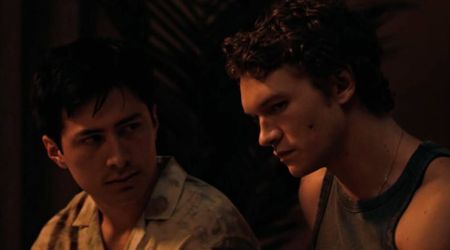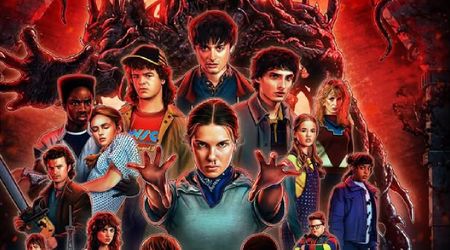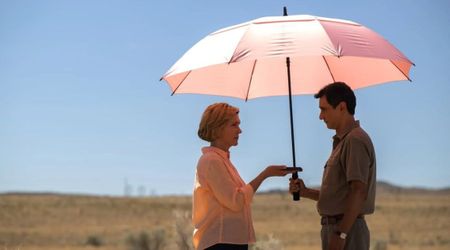EXCLUSIVE| Looney Tunes Cartoons' composer Carl Johnson on sound effects from the early days: 'They were organic'

Since its inception, the 'Looney Tunes' cartoons have had an unforgettable theme. And now with the latest HBO Max reboot, Carl Johnson, who is an Emmy-winning composer known for his work on ‘Animaniacs,’ ‘Wall-e,’ ‘Skyfall,’ ‘Pinky and the Brain,’ ‘The Spiderwick Chronicles,’ among many others, gave it his own twist. He made sure the nostalgic elements of the compositions remained the same. In an exclusive interview to MEA WorldWide (MEAWW), Johnson opened up about the challenges of working on the sounds, and the evolution of the composition since the 1930s.
What was the most challenging part of the project?
There have been several challenges, really. One has been trying to get inside Carl Stallings’s mind and discover how he approached cartoon music, what made it work so well, and how he would have approached these new shorts. He really established the style and now we have to take that vocabulary and apply it to new situations. Over the years I’ve collected copies of some of his original sketches, so I was able to examine his writing vocabulary and carefully look at exactly how he got those sounds. Hopefully, this new music can take what he started and continue it in a way he would approve of.
Another challenge has been integrating the electronic and live aspects of the score so that they sound like one. Part of the score is done with a full orchestra, part is done electronically, so it’s a little tricky to make the two sound indistinguishable. One thing that has really helped is some of the “physical modeling” instruments that are available today. They can be incredibly realistic if you spend the time to program them correctly and when used with a convincing “impulse response” reverb, the results can be stunningly authentic.
Was there a particular sound that took more effort than the rest to create?
There is a signature “wah-wah” sound that is made by brass instruments using a special kind of mute called a Harmon mute. It is commonly used in jazz (think Miles Davis) but in cartoon music the player places their hand over the end of it and moves it while playing to make the “wah” effect. It’s a skill that the studio players don’t necessarily learn in the conservatory, so it takes some time to master. Also replicating that sound electronically when necessary is tricky. When it works, though, it adds just the right amount of humor to a joke.
What do you think about the sound effects back in the early days of the cartoons? Could you take us through its evolution?
The early cartoons had very few sound effects. They let the music do most of that. I think that was very effective since it allowed the musicians to bring the whole variety of sounds that they can make on their instruments to the project. Also, the early sound effects used almost no electronic enhancement, so the sounds ended up being very “organic” and unusual. They would take a big spring out of a truck, smack it with a hammer, record it with a primitive microphone onto old, noisy tape and the end result was wonderful. Maybe it’s just familiarity, but those old sound effects had a real charm in their grunge. As technology has improved, the sound has gotten cleaner and more electronically processed. I wonder if that hasn’t robbed them of some of their magic.
Which part of this project are you the most proud of?
I think most people will find these shorts genuinely funny. From the initial ideas to the storyboarding through voice recording, animation and music, the whole creative team has really tried to keep the humor foremost in their minds. Of course, “funny” is a judgment call, but I think between the directors, animators and musicians, there are some moments where the gags work really well. When a joke lands and you get a physical laugh out of someone - that’s tremendously rewarding.
How have you been dealing with the coronavirus pandemic and the lockdown situation?
Oddly, the coronavirus hasn’t really affected my production process that much. I live over two hours from the Warner Brothers offices, so we were already doing many of our meetings online. I had already been working with musicians recording themselves at home, so they just continued doing what they were already doing. The biggest change has been the delay in doing more orchestral recording sessions. At the moment it’s unclear when we’ll be able to get back into a studio with 35-40 musicians to record a live score again, but I look forward to getting the band back together soon.
Any upcoming projects?
In addition to music for film and TV, I’ve also been working on several musical theatre shows. Last year my writing partner and I had readings of “Bagels! The Musical” and “Mary Marie” in New York as part of our developmental process. I really enjoy being able to work on a musical project that is all about live actors and a live audience. That immediate feedback from an audience offers a nice contrast to the solitude of film and TV projects. Although with the current shutdown of live theatre, I’m really glad to be in animation, too.










